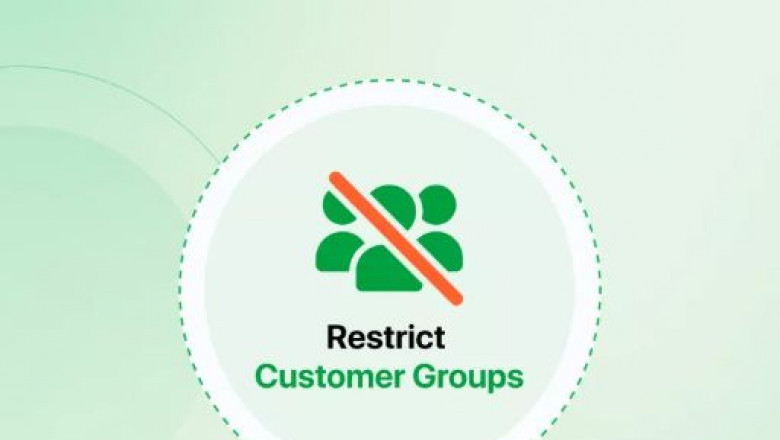views
Managing access for both B2B and B2C customers is essential for any online store. Businesses and individual shoppers have different needs, pricing structures, and product visibility requirements. In PrestaShop, you can restrict products by customer groups, ensuring each group sees only the relevant products and pricing.
This feature is especially useful for stores that serve both wholesale and retail customers. By using PrestaShop product visibility settings, you can create a seamless shopping experience while keeping your business operations efficient.
1. Why Separate B2B and B2C Customers?
Having separate access for B2B and B2C customers offers several benefits:
Better Pricing Control: Wholesale customers see bulk pricing, while retail customers see standard prices.
Targeted Product Visibility: Certain products may be exclusive to B2B customers.
Personalized Shopping Experience: Custom discounts, tax settings, and offers for each group.
Improved Customer Satisfaction: Customers find what they need without confusion.
With PrestaShop, you can restrict products by customer groups to ensure the right customers see the right products.
2. How to Restrict Products by Customer Groups in PrestaShop
PrestaShop allows you to create customer groups with different access settings. Here’s how you can do it:
Step 1: Create Separate Customer Groups
Log in to your PrestaShop Admin Panel.
Navigate to Customers → Groups.
Click Add New Group.
Name one group "B2B Customers" and another "B2C Customers".
Set tax rules, price display settings, or discounts for each group.
Click Save.
By setting up customer groups, you can easily restrict products by customer groups based on your business needs.
Step 2: Assign Customers to the Right Group
Go to Customers → Customers.
Find the customer and click Edit.
Under Group Membership, select either "B2B Customers" or "B2C Customers".
Click Save.
New customers can also be automatically assigned to groups based on registration criteria.
Step 3: Restrict Product Visibility for Customer Groups
Go to Catalog → Products.
Select a product and click Edit.
Navigate to the Options tab.
Under Visibility, select Customer Groups.
Choose B2B Customers or B2C Customers depending on the product.
Click Save.
Now, only the selected group will see the product, thanks to PrestaShop product visibility settings.
3. Create Different Pricing for B2B and B2C Customers
If you sell the same product to both B2B and B2C customers, you may need different pricing structures. Here’s how to set this up:
Go to Catalog → Products.
Select the product you want to edit.
Navigate to the Pricing tab.
Under Specific Prices, click Add a New Price.
Select a Customer Group (B2B or B2C).
Set different pricing or discounts for each group.
Click Save.
This ensures that B2B customers see wholesale pricing, while B2C customers see retail pricing.
4. Hide Certain Categories from Specific Customer Groups
If some product categories should be visible only to B2B customers, you can restrict access:
Go to Catalog → Categories.
Click Edit on the category you want to restrict.
Under Group Access, select the customer groups that should see the category.
Click Save.
With these PrestaShop product visibility settings, your B2B and B2C customers will only see the products meant for them.
5. Automate Customer Group Assignment
Instead of manually assigning customers, you can automate the process using:
PrestaShop Registration Forms: Add a custom field asking customers if they are B2B or B2C.
PrestaShop Modules: Use add-ons that automatically assign customer groups based on business type.
Automation saves time and ensures customers are categorized correctly.
6. Customize the Checkout Experience for Each Group
B2B and B2C customers have different checkout needs. You can customize:
Payment Methods: Offer credit payments for B2B and instant payments for B2C.
Shipping Options: Provide bulk shipping options for B2B and standard delivery for B2C.
Tax Rules: Apply VAT exemptions for B2B customers.
To do this:
Go to Payment → Preferences and set payment methods by customer group.
Go to Shipping → Carriers and assign specific carriers to different groups.
Use Tax Rules to apply different tax settings for B2B and B2C customers.
7. Monitor and Optimize Customer Access
Once you have set up PrestaShop product visibility settings, track how customers interact with the store:
Check Analytics: Monitor which products are most viewed by each group.
Gather Feedback: Ask B2B and B2C customers about their shopping experience.
Adjust Settings: Refine your strategy based on customer behavior.
Regular optimization ensures that B2B and B2C customers have the best experience.
Conclusion
Managing B2B and B2C customers separately in PrestaShop is simple with customer groups and product visibility settings. By following these steps, you can:
Restrict products by customer groups to ensure the right products reach the right customers.
Set different pricing and discounts for B2B and B2C customers.
Automate group assignment for better customer management.
Customize checkout options based on customer type.
With these PrestaShop product visibility settings, your store will provide a seamless shopping experience for all customers.














Comments
0 comment